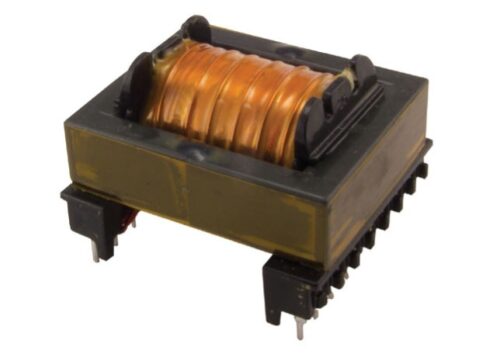Push Pull Converter Application Notes
The push-pull converter is one of the oldest switching topologies, and it can give multiple outputs with single input.
Output voltages can be higher or lower than input voltages when changing the winding’s turns ratio of the transformer.
Push-pull Converters distinguishing feature pairs of transistors in a symmetrical push-pull circuit, transistors periodically reverse the current in the transformers by switching on and off units. Therefore, current is drawn from the line during both halves of the switching time. With a single transistor working in the same way, but current is drawn half the time, that is difference between buck-boost converters and push-pull converter. So with this push-pull circuit, push–pull converters have steady input current, create less noise on the input line, and are more efficient in higher power applications.
At first half cycle of switching frequency, Supply is given at Vin, Q1 is on and Q2 is off, direction of current is clockwise, Np1 gets charged, Ns1 and Ns2 also will get charged due to induction. D1 will get forward biased and D2 will be reverse biased. LC filter will smooth the output voltage and ripple to a more pure DC form output voltage.
At second half cycle of switching frequency, Q1 is off and Q2 is on, direction of current become counterclockwise, Np2 gets charged, Ns1 and Ns2 will keep inducing. But direction of current will be reversed, D1 will get reverse biased and D2 will get forward biased. LC filter will carry the filtering function as mentioned above.
Two transistors Q1 and Q2 keep on and off periodically and repeatedly in every period so we can get steady and regulated output voltage. However, the most important is that two transistors must never be closed simultaneously, they will damage if they get closed together.
Push-Pull Design Applications
Push-pull designs are popularly used in middle to high power applications (150W to 1000W), operating with greater efficiency and less noise. Many diverse applications for these products include:
Contact MPS Industries
MPS has extensive experience designing and supplying push-pull transformers to automotive, medical, military and industrial markets with excellent customer satisfaction. Please contact MPS for any of your magnetic component requirements.
Take the Next Step
Whether it's a stock or custom transformer solution, MPS has the capabilities to help you thrive.
View Our Stock Push-Pull Transformers View Our Custom Transformer Capabilities

